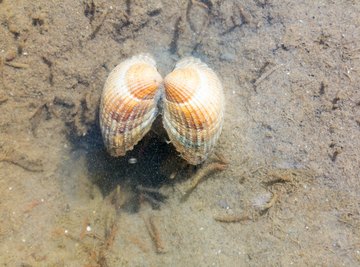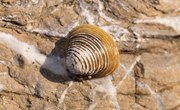
What is a clam?
The word "clam" can be a very vague term. It generally refers to a type of animal called a "bivalve mollusk," though the term clam can include, all, some or just a very few species from this type of animal. As a result, the word "clam" does not have a whole lot significance within biology, though it often is used more specifically for cuisine. Generally speaking, the term "clam" is used to describe any type of bivalve mollusk that is able to burrow into sand or other sorts of sediment. This helps distinguish from other mollusks that can more directly attach themselves to a surface (which is something that oysters and mussels are able to do).
How do clams move?
Clams have the most control of their movement using their foot. This foot allows for a certain amount of lateral (side-to-side) movement. However, this foot is most useful for allowing the clam to burrow into the sand. For this reason, the foot is strongest at digging, which allows a clam to submerge itself safely out of harm's way. Aside from digging into the sand, most clams then move by using water currents, which allows them to move from one region to the other. On the other hand, clams do not have a lot of control over how or where water currents carry them.
What muscles do clams use?
Most clams have two different kinds of muscles. The most basic one that they have helps them open and shut their shells via their "valve" muscles. These muscles are very strong and can allow some clams (which, by nature, are required to live in water) to survive for short periods of time outside of the water. The other muscle that clams have is a muscular "foot". The foot is controlled by two muscles, the anterior and posterior foot muscles, which work together to control the foot. Clams are unique in that they have retracting muscles which allow for greater control of the foot.
About the Author
Adam Cloe has been published in various scientific journals, including the "Journal of Biochemistry." He is currently a pathology resident at the University of Chicago. Cloe holds a Bachelor of Arts in biochemistry from Boston University, a M.D. from the University of Chicago and a Ph.D. in pathology from the University of Chicago.
